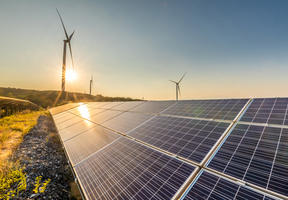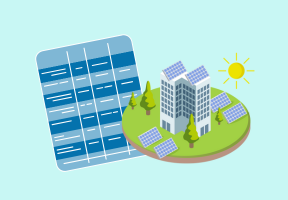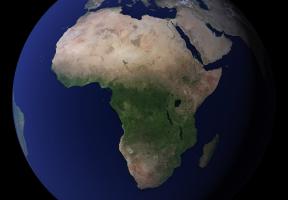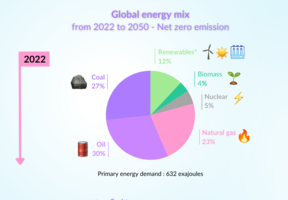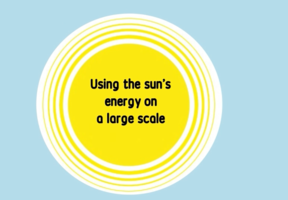The Growth of Photovoltaic Solar Power Around the World
10 min read
Alongside wind, photovoltaic solar is the fastest developing energy source worldwide. But it’s going to need to pick up speed to achieve the “carbon neutrality”1 objective by 2050. To get there, more gigantic photovoltaic farms need to be installed and more building-integrated systems added to parking lot canopies, public buildings and people’s homes.
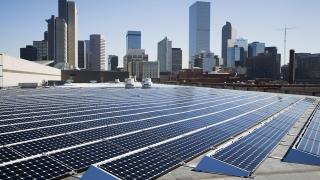
© SUNPOWER CORP - The rooftop solar array on the Colorado Convention Center in Denver, in the United States.
How can we measure the challenge ahead?
A photovoltaic panel directly produces when it is exposed to sunlight. Global photovoltaic electricity production reached 1,000 terawatt-hours (TWh)2 in 2021. The International Energy Agency, who has drawn up ‘scenarios’ to achieve long-term carbon neutrality, estimates that the contribution from solar energy should reach 6,970 Twh in 2030, which basically means that we have to multiply our current performance in photovoltaic solar power by seven in the space of 10 years3.
What is the share of solar power in the global electricity mix?
To reduce the contribution from fossil fuels ( , oil, gas) that are finite and generate more pollution, “green” electricity needs to gain ground in our daily lives, in particular for heating and transportation. Yet the share of renewables or carbon-free energies is still very low. In 2021, solar energy produced just over 3,7% of electricity worldwide, which in figures gives 1,000TWh, behind wind (1,820 TWh), nuclear (2,750 TWh) and hydraulic energy from large dams (4,200 TWh).
Which countries are blazing the trail?
The world’s biggest coal consumer, China (with a population of 1.4 billion) is also the country where solar power and other renewables are developing the fastest, to cope with its gargantuan energy demands. It represents 30% of total global PV electricity production, and in 2021, counted for three quarters of world progress in this sector. Thanks to Germany, Europe was a pioneer in photovoltaic energy and stands for 20% of world production, Germany producing half this contribution ahead of Italy, Spain and - much further behind - France. The United States are also driving growth in the renewables sector with 16% of global production dedicated to photovoltaic energy. Owing to its abundant subsurface resources, the United States is also one of the biggest producers of fossil fuels.
What is the outlook for global development?
Photovoltaic solar power has great advantages to boost its robust growth. Successive waves of technological advances help improve the efficiency4 of photovoltaic cells. The predominant solar cell category is based on , the second most abundant element on Earth. In these conditions the cost of the electricity produced by solar cells decreases as the sector develops. Since 2010, production costs of have fallen by 82%.
Another more emerging technology using photovoltaic panels is . It combines photovoltaic electricity production, with solar panels placed high above, and agricultural production or livestock farming on the same land area. A wide variety of crops can benefit from this process, including vines, fruit trees, vegetables, rice paddies, as well as various livestock, such as poultry, sheep, and even cattle. The numbers are still modest, but the movement has been accelerating since the early 2020s with the involvement of large energy companies. Agrivoltaics is becoming an emerging market worldwide, especially in Europe (Italy, Austria, Germany and France) and in Japan, where by 2023 almost 2,000 installations will be supplying nearly 1% of the country's total photovoltaic electricity.
Sources :
- GIEC definition: Net zero carbon dioxide ( ) emissions are achieved when anthropogenic CO2 emissions are balanced globally by anthropogenic CO2 removals over a specified period.
- 1 TWh = 1 billion kilowatt-hours. One kWh is approximately the quantity of electricity used by an iron in one hour.
- Read the IEA analysis: www.iea.org/fuels-and-technologies/solar
- The efficiency is the of the electrical energy produced to the light energy that falls on the panel.

